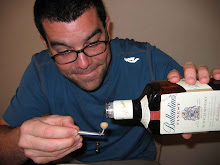Just a quick post to let all of you know that we arrived safe and sound on the island, and have been hard at work collecting for the past several days. The island is gorgeous as expected, and we have been collecting in some beautiful lowland and mid-elevation forests. So far we documented around 75 species from just two localities and three full days in the field. Not to shabby! Fortunately, one of the more common fungi we have been encountering is the bioluminescent species
Filoboletus manipularis, which we have brought back to the apartment and photographed at night.

We are working here with the support of the Conservation Society of Pohnpei (CPS), an amazing group of people focused on preserving not only the natural environment of the island, but also the traditional uses of the plants that occur here. As is the case with so many areas, there has traditionally been little use of the native fungi for either food or medicine, but there certainly is interest. We have already been able to show our local guides several edible species that grow in great abundance on the island.
Wayne, our host from the New York Botanical Garden, has set us up in an apartment outside the the city of Kolonia. It's great to be staying in the more rural areas of the island, and we have transformed our living space into a very functional lab, restaurant, and of course, bar. The food has been fantastic, with lots of fish, beer, spam, beer, rice, more beer, and the gastronomical highlight so far, mangrove crab. These are very large crab with huge claws and tons of meat. The local cooking method is to simmer the cut up crab in coconut milk. All I can say is that is by far the best crab I have ever had. All of you west coasters reading this, run to the store right now and try this method with some dungeness crab. You will not regret it!
Hope all of you are well,
b.
















